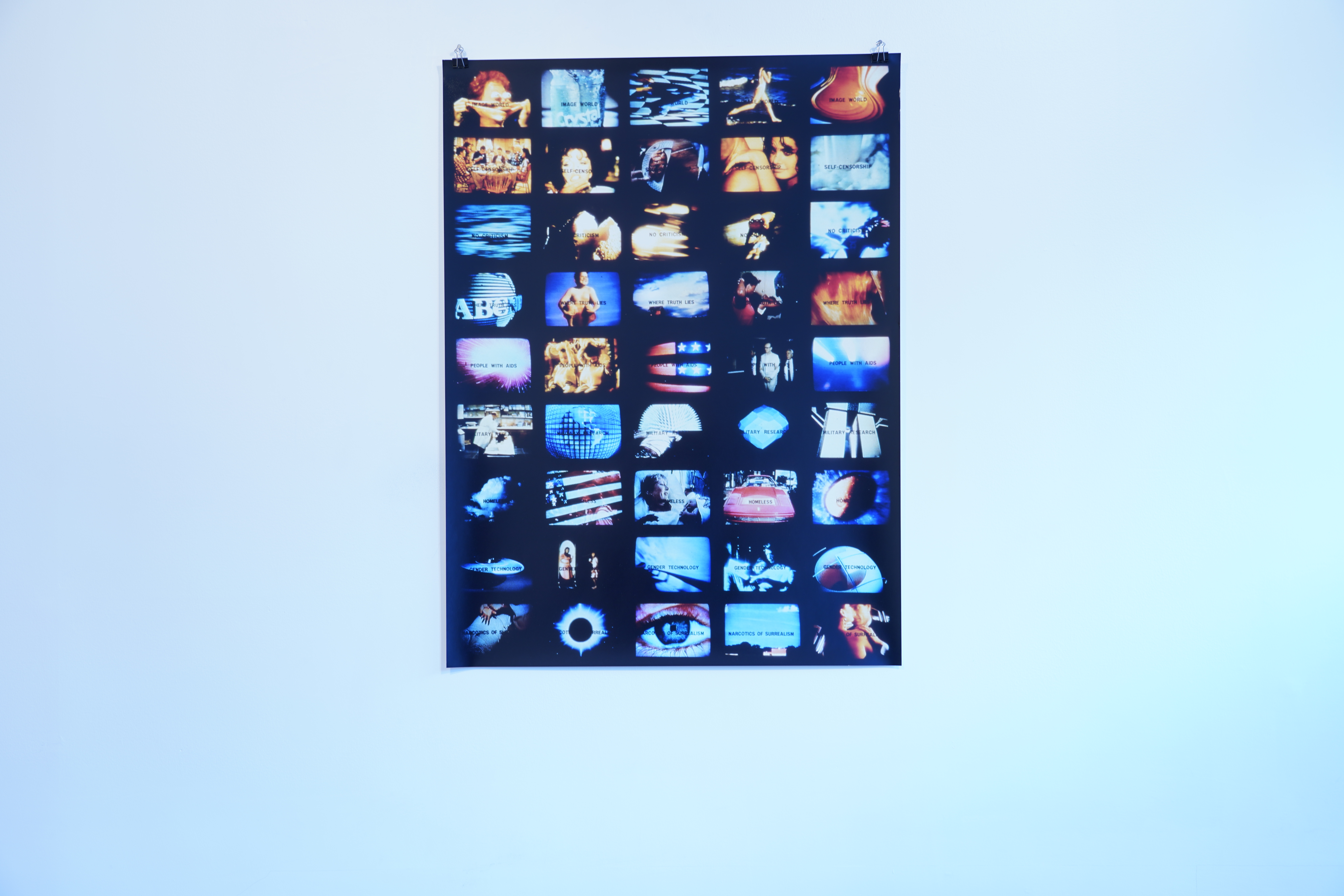THURS MAY 16 -
SUN JUN 02, 2024
CURATED BY RACHEL ROSSIN
ORGANIZED W/ VERA DIKA AND RYAN MULLER, SPRUETH MAGERS
SUN JUN 02, 2024
CURATED BY RACHEL ROSSIN
ORGANIZED W/ VERA DIKA AND RYAN MULLER, SPRUETH MAGERS
IN FOCUS: GRETCHEN BENDER
PART ONE OF A THREE PART SERIES
ON HALLWALLS AND THE PICTURES GENERATION IN FIDI
PRESENTED BY SARA’S AND DUNKUNSTHALLE
PART ONE OF A THREE PART SERIES
ON HALLWALLS AND THE PICTURES GENERATION IN FIDI
PRESENTED BY SARA’S AND DUNKUNSTHALLE
64 FULTON STREET
NEW YORK, NY 10038
NEW YORK, NY 10038






Born in 1951 in Seaford, Delaware, Gretchen Bender was an artist whose work in film, video, and photography placed her as an indelible member of the ‘Pictures Generation’ of the 1980s, alongside artists such as Cindy Sherman, Laurie Simmons, Richard Prince, Robert Longo, and Jack Goldstein. Bender attended the University of North Carolina at Chapel Hill, where she discovered printmaking as a means of engaging with the public via mass circulation of visual material. Upon graduating in 1973, she moved to Washington D.C. and became involved with a feminist-Marxist screenprinting collective.
In 1978 she moved to New York, where she debuted her Pleasure is Back series, in which she first began to rely on imagery sourced from film and television. The series was made up of prints overlaid on tin plates that juxtaposed work
In 1978 she moved to New York, where she debuted her Pleasure is Back series, in which she first began to rely on imagery sourced from film and television. The series was made up of prints overlaid on tin plates that juxtaposed work
embedded in the art-historical cannon alongside images pulled directly from TV screens. Bender began relying on video as a medium with the debut of 1984 works Wild Dead and Dumping Core, which involved multi-channel video installations and computer-generated graphics edited against a loud, thumping, club-like soundtrack. Bender’s 1987 work entitled Total Recall would come to be her magnum opus, comprising twenty-four CRT monitors and three projections displaying a cacophony of fragmented films, commercials, and news broadcasts.
She would later employ the same distinctive fast-paced, strobe-like video editing techniques while directing music videos including Bruise Violet by Babes in Toyland (on view),
She would later employ the same distinctive fast-paced, strobe-like video editing techniques while directing music videos including Bruise Violet by Babes in Toyland (on view),
and editing several music videos directed by Robert Longo for artists such as R.E.M., New Order, and Megadeth. Further delving into the medium of television, Bender designed the now infamous title sequence to the TV show America’s Most Wanted, which Roberta Smith supposed in a 2004 New York Times article, “may have originated the rapid-fire hyper-editing now pervasive in film, television, and video art.” Bender died of cancer at the age of 53.
Her work is in the collections of the Museum of Modern Art, Metropolitan Museum of Art, The Tate Modern, The Art Institute of Chicago, The Museum of Contemporary Art Los Angeles, The Centre Georges Pompidou, and the Menil Collection.
Her work is in the collections of the Museum of Modern Art, Metropolitan Museum of Art, The Tate Modern, The Art Institute of Chicago, The Museum of Contemporary Art Los Angeles, The Centre Georges Pompidou, and the Menil Collection.